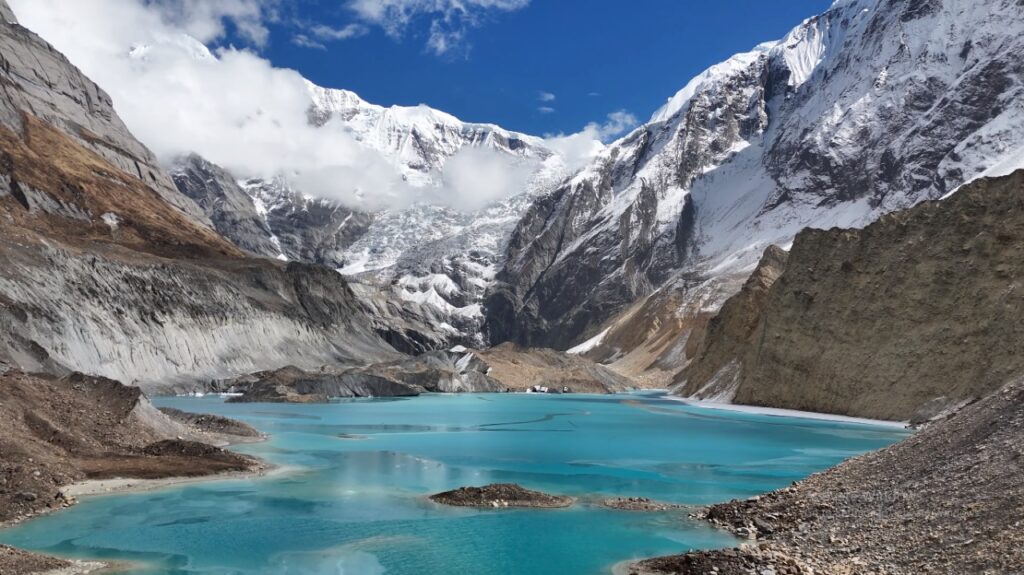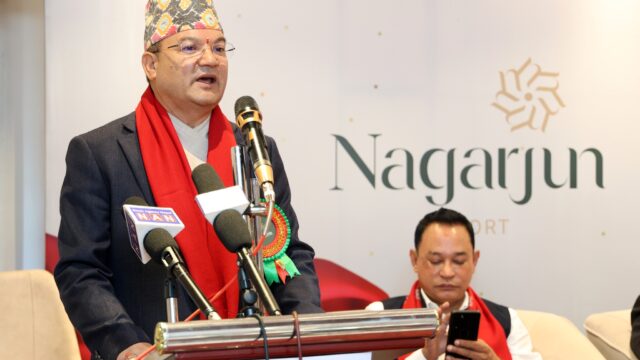The number of trekkers visiting the Annapurna I Base Camp through the scenic Narchyang trail in Annapurna Rural Municipality-4 has seen a significant rise in recent months. This surge is attributed to improved trail management and the growing availability of basic infrastructure such as hotels and tea shops along the route.
The trail, once lesser-known among trekking enthusiasts, is gradually establishing itself as an emerging route to the base of the historic Annapurna I peak, famously known as the first mountain over 8,000 meters ever summited.

Historic Peak Gaining Renewed Attention
Annapurna I, often referred to as the “Eldest Peak” in the climbing community, holds a unique place in mountaineering history. It was first successfully summited on June 3, 1950, by a French expedition team led by Maurice Herzog, accompanied by Louis Lachenal and two Nepali Sherpas.
Despite this landmark achievement, the trekking route to its base camp remained in the shadows for decades. However, with local initiatives from Narchyang residents and support from local government bodies, the trail is now receiving the recognition it deserves.
Efforts by Local Government and Community
In collaboration with the ward office and Annapurna Rural Municipality, efforts are now underway to promote and develop the base camp trail. Tej Gurung, a tourism entrepreneur and one of the trail advocates, shared that infrastructure development has played a crucial role in increasing tourist arrivals.
“With the construction of shelters, tea shops, and lodges along the route, promotion of the trail has accelerated. This year, we’ve seen a rise in both domestic and international visitors,” Gurung stated.
According to Gurung, nearly 10,000 tourists visited the base camp last year, and numbers are rising steadily this season. Unlike previous years where most climbers reached the base camp by helicopter, this year many are choosing to trek, enriching the experience while supporting local businesses.
Emerging Trail Infrastructure
Key rest points along the route, such as Humkhola, Sandhikharka, Gufafant, Bhusketmela, and Panchakundatal, now feature tea shops and temporary lodges. Notably, the “Futfute Waterfall” area has become a popular stop for refreshments and rest.
Gurung further mentioned that many lodges can now accommodate between 40 to 80 trekkers at a time, making it easier for groups to stay overnight without the need to carry camping supplies. “Over 6,000 domestic tourists have already visited the area this season alone,” he noted.
Overcoming Past Challenges
Michael Pariyar, who operates a hotel in Sandhikharka, explained how the recent infrastructure growth has resolved long-standing issues. “In the past, trekkers had to carry their own food and sleeping equipment. Now, with hotels available en route, those difficulties are gone,” he shared.
The trek from Pokharebagar to Humkhola spans approximately 20 kilometers and is now accessible by road. From Humkhola, a 16-kilometer trail leads to the base camp. “Annapurna I is considered one of the most difficult peaks to climb, and now the trail to its base has become much more accessible,” Pariyar added.
Homestays and Regular Facilities at Key Points
The trail begins at Narchyang village, which offers homestay services to visitors. From there, hotels are available at intervals of approximately every two hours of walking. This consistent availability of food and lodging has solved one of the biggest logistical hurdles for trekkers.
Ajit Century, who operates a hotel near Panchakundatal, stated, “To reduce tourist discomfort and to generate local income, we’ve collectively invested in hotels along the trail. This has opened new employment opportunities for many villagers.”
Towards a Safer and More Attractive Destination
Local tourism entrepreneurs are optimistic about the region’s future. “We are continuously expanding infrastructure and services to transform Annapurna Base Camp into a safe, adventurous, and top-tier trekking destination,” said Gurung.
Key natural attractions such as the tranquil Panchakundatal (Five Lakes), dozens of waterfalls, and majestic Himalayan landscapes are highlights of this trail. These scenic elements, coupled with cultural hospitality and improved services, are redefining the trekking experience in Myagdi district.

Rising from Obscurity
Despite its immense potential, the Annapurna I Base Camp trail and the historic Maurice Herzog Route had long remained under-promoted. Thanks to increasing awareness, marketing efforts, and improved access, this once-overlooked trail is finally gaining momentum among trekkers and adventure seekers.
Locals believe that with continued government support and sustainable development, this trail can compete with other popular trekking routes like the Annapurna Base Camp and Everest Base Camp circuits.
The renewed focus on promoting the Annapurna I Base Camp trail through Narchyang has created fresh opportunities for tourism in the region. With the combination of natural beauty, historic significance, and improved facilities, the trail is well on its way to becoming a major destination for both domestic and international tourists.
The success of this initiative stands as a powerful example of how community effort, backed by local government support, can revive and transform hidden gems into thriving tourism hubs.






